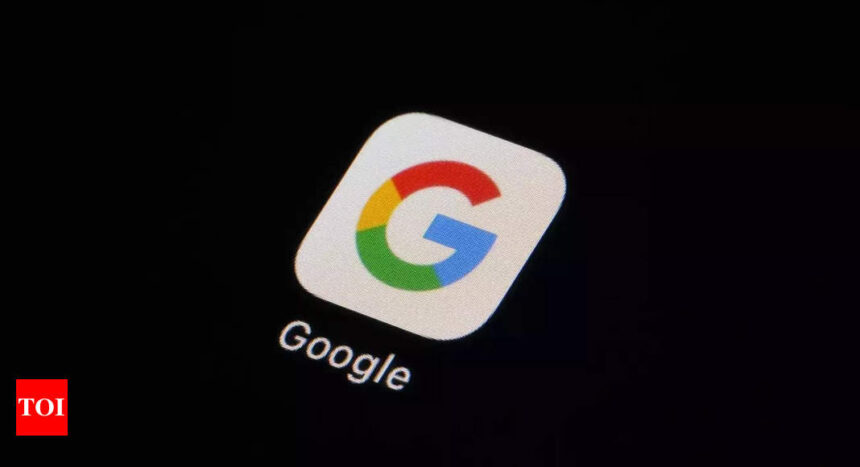Whenever there is a conversation about a product, suddenly people find an advertisement about the same item on their phone. This happens because, in a matter of milliseconds, the software analyses your identity, browsing habits, and purchasing behavior to determine which advertisements you see.
Currently, the trial is underway in federal court in Alexandria, Virginia, which will determine if Google’s ad tech stack constitutes an illegal monopoly, AP news agency reported.
The justice department and a coalition of states argue that Google’s dominance over the technology controlling the daily sale of billions of Internet display ads is so extensive that it constitutes an illegal monopoly that should be dismantled.
Google hasn’t just illegally cornered the market in search — it’s squeezed online publishers and advertisers with monopolies.
The first week of the trial has provided an in-depth examination of how Google’s products work together to conduct behind-the-scenes electronic auctions that place ads in front of consumers almost instantly.
Online advertising has undergone rapid evolution over the past 15 years. In the past, internet display ads were often generic and displayed regardless of the user’s interests or the content they were viewing. Now, algorithms carefully match ads to your interests, sometimes to an almost unsettling degree. Google claims to have invested billions of dollars to improve ad quality and ensure that advertisers can reach their target consumers.
However, the department alleges that Google has manipulated the automated ad sales auctions over the years to favor itself over other potential industry players, depriving the publishing industry of hundreds of millions of dollars it would have received if the auctions were truly competitive. Government witnesses have provided detailed explanations of the auction process and its evolution at the Virginia trial.
According to the government’s portrayal, three distinct tools interact to sell an ad and display it to a consumer: ad servers used by publishers to sell space on their websites, ad networks used by advertisers to buy ad space across relevant websites, and an ad exchange that matches the website publisher to the advertiser through an instant auction. Publishers aim to receive the highest possible price for their ad space, but testimony at trial has revealed that this did not always happen due to Google’s imposed rules.
For years, Google gave its own ad exchange, AdX, the first opportunity to match a publisher’s proposed floor price. If Google’s ad exchange bid the minimum amount, it would win the auction, even if competing ad exchanges were willing to pay more. Google claimed this system was necessary to ensure fast ad loading times, but publishers found a workaround called “header bidding” to conduct auctions outside of Google’s control. Google viewed header bidding as an “existential threat” to its market share and responded by leveraging its control over all three components of the process.
Professor Ramamoorthi Ravi, an expert at Carnegie Mellon University, testified that the rules imposed by Google failed to maximize value for publishers and “seem to have been designed to advantage Google’s own products.”
Publishers could stop using Google’s ad exchange entirely, but they were reluctant to do so because they would lose access to Google’s vast, exclusive cache of advertisers in its Google Ads network, which was only available through Google’s ad exchange, as per AP news agency.
Google maintains that it hasn’t run auctions in this manner since 2019 and that its share of the display ad market has begun to erode over the last five years. The company argues that integrating its buy-side, sell-side, and middleman products helps them run seamlessly and quickly while minimizing fraudulent ads or malware risks. Google also claims that its innovations over the past 15 years have driven improvements in matching online ads to consumer interests, allowing publishers to sell their ad space at a premium.
The department contends that even though Google no longer runs its auctions in the ways described, it helped Google maintain its monopoly in the ad tech market leading up to 2019, and its existing monopoly allows Google to keep up to 36 cents on the dollar of every ad purchase it brokers when the transaction runs through all of its various products.
The Virginia trial follows a recent ruling by a judge in Washington that Google’s search engine also constitutes an illegal monopoly. No decision has been made on what if any, remedies the judge will impose in that case.
Currently, the trial is underway in federal court in Alexandria, Virginia, which will determine if Google’s ad tech stack constitutes an illegal monopoly, AP news agency reported.
The justice department and a coalition of states argue that Google’s dominance over the technology controlling the daily sale of billions of Internet display ads is so extensive that it constitutes an illegal monopoly that should be dismantled.
Google hasn’t just illegally cornered the market in search — it’s squeezed online publishers and advertisers with monopolies.
The first week of the trial has provided an in-depth examination of how Google’s products work together to conduct behind-the-scenes electronic auctions that place ads in front of consumers almost instantly.
Online advertising has undergone rapid evolution over the past 15 years. In the past, internet display ads were often generic and displayed regardless of the user’s interests or the content they were viewing. Now, algorithms carefully match ads to your interests, sometimes to an almost unsettling degree. Google claims to have invested billions of dollars to improve ad quality and ensure that advertisers can reach their target consumers.
However, the department alleges that Google has manipulated the automated ad sales auctions over the years to favor itself over other potential industry players, depriving the publishing industry of hundreds of millions of dollars it would have received if the auctions were truly competitive. Government witnesses have provided detailed explanations of the auction process and its evolution at the Virginia trial.
According to the government’s portrayal, three distinct tools interact to sell an ad and display it to a consumer: ad servers used by publishers to sell space on their websites, ad networks used by advertisers to buy ad space across relevant websites, and an ad exchange that matches the website publisher to the advertiser through an instant auction. Publishers aim to receive the highest possible price for their ad space, but testimony at trial has revealed that this did not always happen due to Google’s imposed rules.
For years, Google gave its own ad exchange, AdX, the first opportunity to match a publisher’s proposed floor price. If Google’s ad exchange bid the minimum amount, it would win the auction, even if competing ad exchanges were willing to pay more. Google claimed this system was necessary to ensure fast ad loading times, but publishers found a workaround called “header bidding” to conduct auctions outside of Google’s control. Google viewed header bidding as an “existential threat” to its market share and responded by leveraging its control over all three components of the process.
Professor Ramamoorthi Ravi, an expert at Carnegie Mellon University, testified that the rules imposed by Google failed to maximize value for publishers and “seem to have been designed to advantage Google’s own products.”
Publishers could stop using Google’s ad exchange entirely, but they were reluctant to do so because they would lose access to Google’s vast, exclusive cache of advertisers in its Google Ads network, which was only available through Google’s ad exchange, as per AP news agency.
Google maintains that it hasn’t run auctions in this manner since 2019 and that its share of the display ad market has begun to erode over the last five years. The company argues that integrating its buy-side, sell-side, and middleman products helps them run seamlessly and quickly while minimizing fraudulent ads or malware risks. Google also claims that its innovations over the past 15 years have driven improvements in matching online ads to consumer interests, allowing publishers to sell their ad space at a premium.
The department contends that even though Google no longer runs its auctions in the ways described, it helped Google maintain its monopoly in the ad tech market leading up to 2019, and its existing monopoly allows Google to keep up to 36 cents on the dollar of every ad purchase it brokers when the transaction runs through all of its various products.
The Virginia trial follows a recent ruling by a judge in Washington that Google’s search engine also constitutes an illegal monopoly. No decision has been made on what if any, remedies the judge will impose in that case.
Source : Times of India









